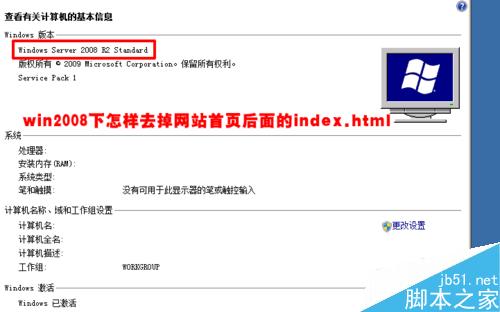Oracle中实现MySQL show index from table命令SQL脚本分享
实验数据初始化:
复制代码 代码如下:
create table t as select * from hr.employees;
create index inx_t1 on t(employee_id,first_name desc,last_name);
create index inx_t2 on t(job_id,hire_date);
显示该表所有索引的信息。
以dba登录
复制代码 代码如下:
set linesize 300;
set pagesize 100;
col c1 format a20;
col c2 format a20;
col c3 format a20;
col c4 format a20;
col c5 format a20;
col INDEX_NAME format a20;
select INDEX_NAME,
max(decode(COLUMN_POSITION,1,COLUMN_NAME||','||COLUMN_LENGTH||','||DESCEND,null)) c1,
max(decode(COLUMN_POSITION,2,COLUMN_NAME||','||COLUMN_LENGTH||','||DESCEND,null)) c2,
max(decode(COLUMN_POSITION,3,COLUMN_NAME||','||COLUMN_LENGTH||','||DESCEND,null)) c3,
max(decode(COLUMN_POSITION,4,COLUMN_NAME||','||COLUMN_LENGTH||','||DESCEND,null)) c4,
max(decode(COLUMN_POSITION,5,COLUMN_NAME||','||COLUMN_LENGTH||','||DESCEND,null)) c5
from (
select INDEX_NAME,COLUMN_NAME,COLUMN_LENGTH,COLUMN_POSITION,DESCEND
from dba_ind_columns
where table_owner='LIHUILIN'
AND table_name='T'
order by INDEX_NAME,column_position
) group by INDEX_NAME;
以普通用户登录
复制代码 代码如下:
set linesize 300;
set pagesize 100;
col c1 format a20;
col c2 format a20;
col c3 format a20;
col c4 format a20;
col c5 format a20;
col INDEX_NAME format a20;
select INDEX_NAME,
max(decode(COLUMN_POSITION,1,COLUMN_NAME||','||COLUMN_LENGTH||','||DESCEND,null)) c1,
max(decode(COLUMN_POSITION,2,COLUMN_NAME||','||COLUMN_LENGTH||','||DESCEND,null)) c2,
max(decode(COLUMN_POSITION,3,COLUMN_NAME||','||COLUMN_LENGTH||','||DESCEND,null)) c3,
max(decode(COLUMN_POSITION,4,COLUMN_NAME||','||COLUMN_LENGTH||','||DESCEND,null)) c4,
max(decode(COLUMN_POSITION,5,COLUMN_NAME||','||COLUMN_LENGTH||','||DESCEND,null)) c5
from (
select INDEX_NAME,COLUMN_NAME,COLUMN_LENGTH,COLUMN_POSITION,DESCEND
from user_ind_columns
where table_name='T'
order by INDEX_NAME,column_position
) group by INDEX_NAME;

但是可以看到,以倒序创建的索引字段,都是以SYS等命名。
Oracle把这种倒序创建的索引字段看成函数索引。
它的信息保存在user_ind_expressions视图。

user_ind_expressions视图的COLUMN_EXPRESSION字段类型是long型。
王工的版本可以解决这个问题
复制代码 代码如下:
CREATE OR REPLACE FUNCTION long_2_varchar (
p_index_name IN user_ind_expressions.index_name%TYPE,
p_table_name IN user_ind_expressions.table_name%TYPE,
p_COLUMN_POSITION IN user_ind_expressions.table_name%TYPE)
RETURN VARCHAR2
AS
l_COLUMN_EXPRESSION LONG;
BEGIN
SELECT COLUMN_EXPRESSION
INTO l_COLUMN_EXPRESSION
FROM user_ind_expressions
WHERE index_name = p_index_name
AND table_name = p_table_name
AND COLUMN_POSITION = p_COLUMN_POSITION;
RETURN SUBSTR (l_COLUMN_EXPRESSION, 1, 4000);
END;
/
复制代码 代码如下:
set linesize 300;
set pagesize 100;
col c1 format a20;
col c2 format a20;
col c3 format a20;
col c4 format a20;
col c5 format a20;
col INDEX_NAME format a20;
SELECT INDEX_NAME,
MAX (DECODE (COLUMN_POSITION, 1, COLUMN_NAME || ' ' || DESCEND, NULL))
c1,
MAX (DECODE (COLUMN_POSITION, 2, COLUMN_NAME || ' ' || DESCEND, NULL))
c2,
MAX (DECODE (COLUMN_POSITION, 3, COLUMN_NAME || ' ' || DESCEND, NULL))
c3,
MAX (DECODE (COLUMN_POSITION, 4, COLUMN_NAME || ' ' || DESCEND, NULL))
c4,
MAX (DECODE (COLUMN_POSITION, 5, COLUMN_NAME || ' ' || DESCEND, NULL))
c5
FROM ( SELECT a.INDEX_NAME,
REPLACE (
DECODE (
descend,
'DESC', long_2_varchar (b.index_name,
b.table_NAME,
b.COLUMN_POSITION),
a.column_name),
'"',
'')
COLUMN_NAME,
a.COLUMN_LENGTH,
a.COLUMN_POSITION,
DESCEND
FROM user_ind_columns a
LEFT JOIN
user_ind_expressions b
ON a.index_name = b.index_name
AND a.table_name = b.table_name
WHERE a.table_name = 'T'
ORDER BY INDEX_NAME, column_position)
GROUP BY INDEX_NAME;
版权声明
本文仅代表作者观点,不代表本站立场。
本文系作者授权发表,未经许可,不得转载。
本文地址:/shujuku/oracle/99066.html














